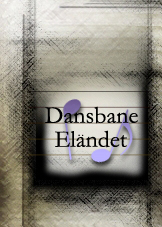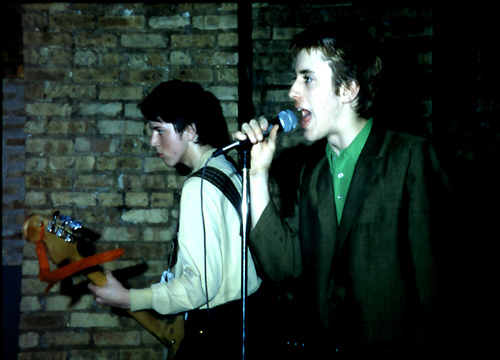|
||||||||


|
Home > Artists > The Imports > Biography The Imports (1979-1980) - Biography Imports' Home | Biography | Discography | Chronology | Repertoire | Reviews
The Imports forged their unique brand of post-punk in the quiet and tree-lined neighborhood of Hyde Park on the South Side of Chicago in the spring of 1980. Most notably, Hyde Park is the home of the University of Chicago, birthplace of the Chicago School of Economics and the site of the laboratory in which Enrico Fermi first split the atom under Stagg Field in the context of the Manhattan Project, and also the site of the 1893 World's Columbia Exposition (aka "The Chicago World's Fair"), from which the building that housed the "Palace of Fine Arts" (now the Museum of Science and Industry) still exists on the northern shore of the lagoon in Jackson Park.
Making up the core of the Imports were Ben Krug (vocals), Tom Krug (guitar) and Joe Strell (bass). Like many bands, the Imports went through a series of drummers including John Krug, who helped establish the Imports as one of a scarce few Chicago punk bands in 1980, Alec Dale, who accompanied the outfit through its transition from punk to post-punk, and finally Tom Wall, who with his inimitable minimalism completed the band's singular sound that would prove to be decades ahead of its time, a sound commercially realized only in much later bands such as Interpol and the Strokes.
During their brief career, the Imports played extensively throughout the limited nightclub circuit of Chicago's new music scene, a scene they shared with other Chicago new wave and/or punk (the distinction was never that clear) bands such as Bohemia, Da!, the Dadistics, Epicycle, the Ferraris, Heavy Manners, the Men, the Oil Tasters (from Milwaukee), Naked Raygun, Painter Band, Phil 'n' the Blanks, Poison Squirrel, Skafish, Special Affect, the Subverts (from Rockford), the Sweatermen, the Throbbers, the Trouble Boys, and the Vaguelys. Additional information about these and other late '70s / early '80s punk groups may be found on the Chicago Punk Database. For another perspective on the Chicago music scene during this time, see Ken Mierzwa's "Ephemeral Creation: Music and Art in Chicago, 1978 - 1982".
Initially, the Imports played a quick pop punk set of originals inspired by late seventies American and British punk acts such as Iggy Pop, the New York Dolls, the Ramones, the Sex Pistols, the Clash, and the Jam. Their repertoire soon swelled to over sixty originals, few of which ran much longer than two minutes, if that. The songs were fast and to the point, their earnest vocals and basic harmonies backed by driving durms, a melodic three-string bass, and the grist of a Gibson SG Junior Les Paul pumped through a Fender Twin Reverb. However, soon after their Chicago debut at the club Ann Arkees on March 6, 1980, the Imports traded their high-intensity pop-punk bombast for a hypnotizing style wrought of brooding melancholy. In a meeting with Paul Weller on March 7th, 1980, during the Jam's "Setting Sons" tour, the Imports ran through a quick "unplugged" set of their material before the Jam played a gig in Old Chicago, a combination shopping mall and amusement park on the far south side. After hearing the Imports play, Paul said that they would go over well in England, and that they reminded him of Joy Division and Gang of Four, which he recommended that they check out. And so they did. Seeing the light (or dark), the Imports immediately tossed out their entire collection of punk originals and began carving out their own nich in the post-punk landscape of the early 1980s, writing stark, mesmerizing compositions that relied not so much upon rapid chord changes but rather employed subtle differences in texture and voicing to convey an underlying message of existential angst and accompanying despair. Although earlier tunes had been written individually by the various members of the band, the Imports wrote their later material as a unit, each song collaboratively constructed by the entire group, restrucured and revised in daily rehearsal sessions. This egalitarian approach, in which each member was responsible for coming up with his own contribution to the song, extended also to the band's preference for sound mixing of their live shows. Rather than having the instrumentation serve as a backing track for the vocal, the Imports saw vocals as simply another instrument, which should be mixed to blend with the others, not stand in front of them. This perspective was understood and realized to a greater or lesser degree by the various soundmen who worked the Imports' shows.
The Imports received enthusiastic reviews in a number of fanzines and periodicals, including:
Although The Imports existed for only a little over a year, and during a time that saw much change in Chicago's nascent underground music scene, they made an undeniable impression upon any and all who happened to witness their striking originality.
|
||||






